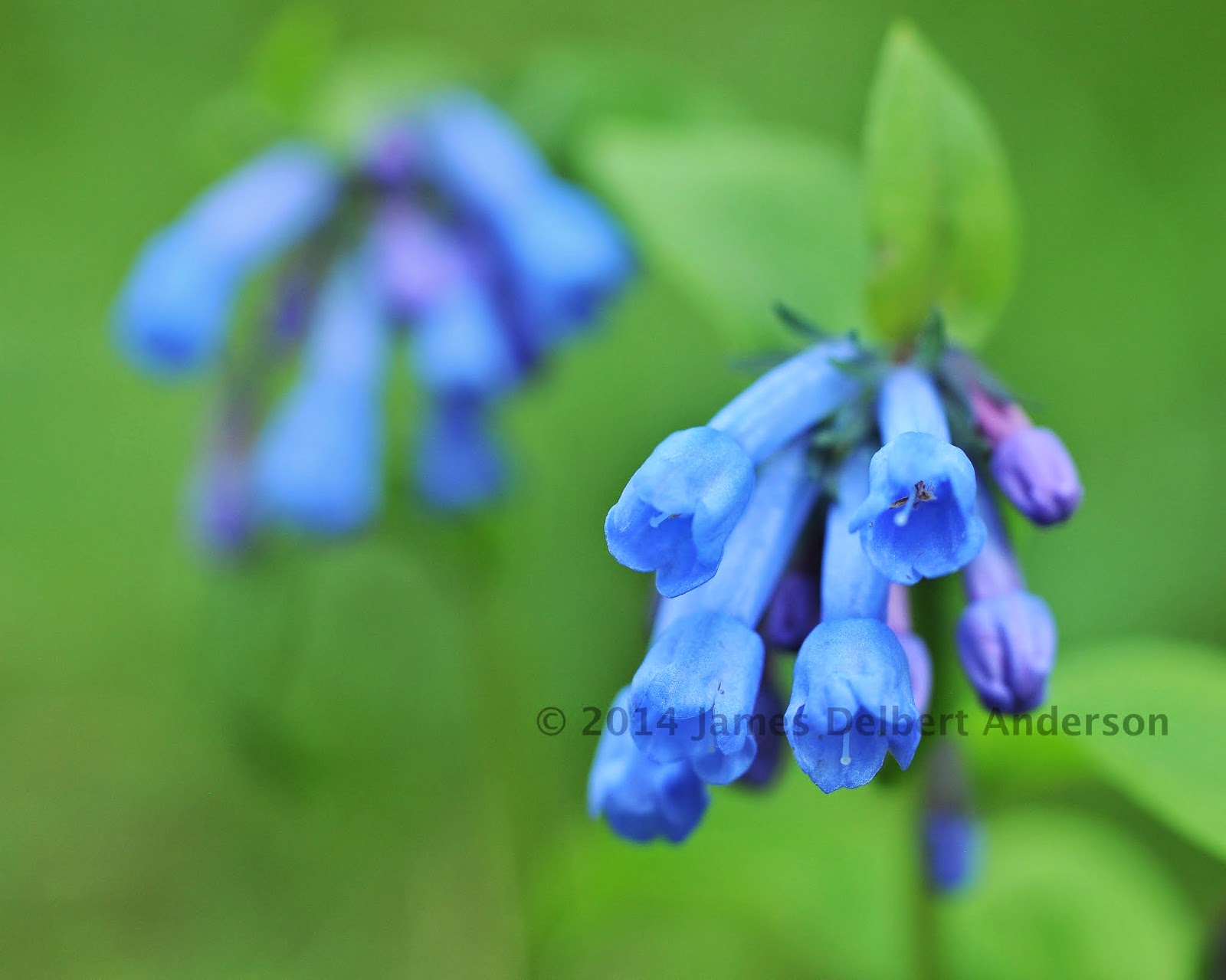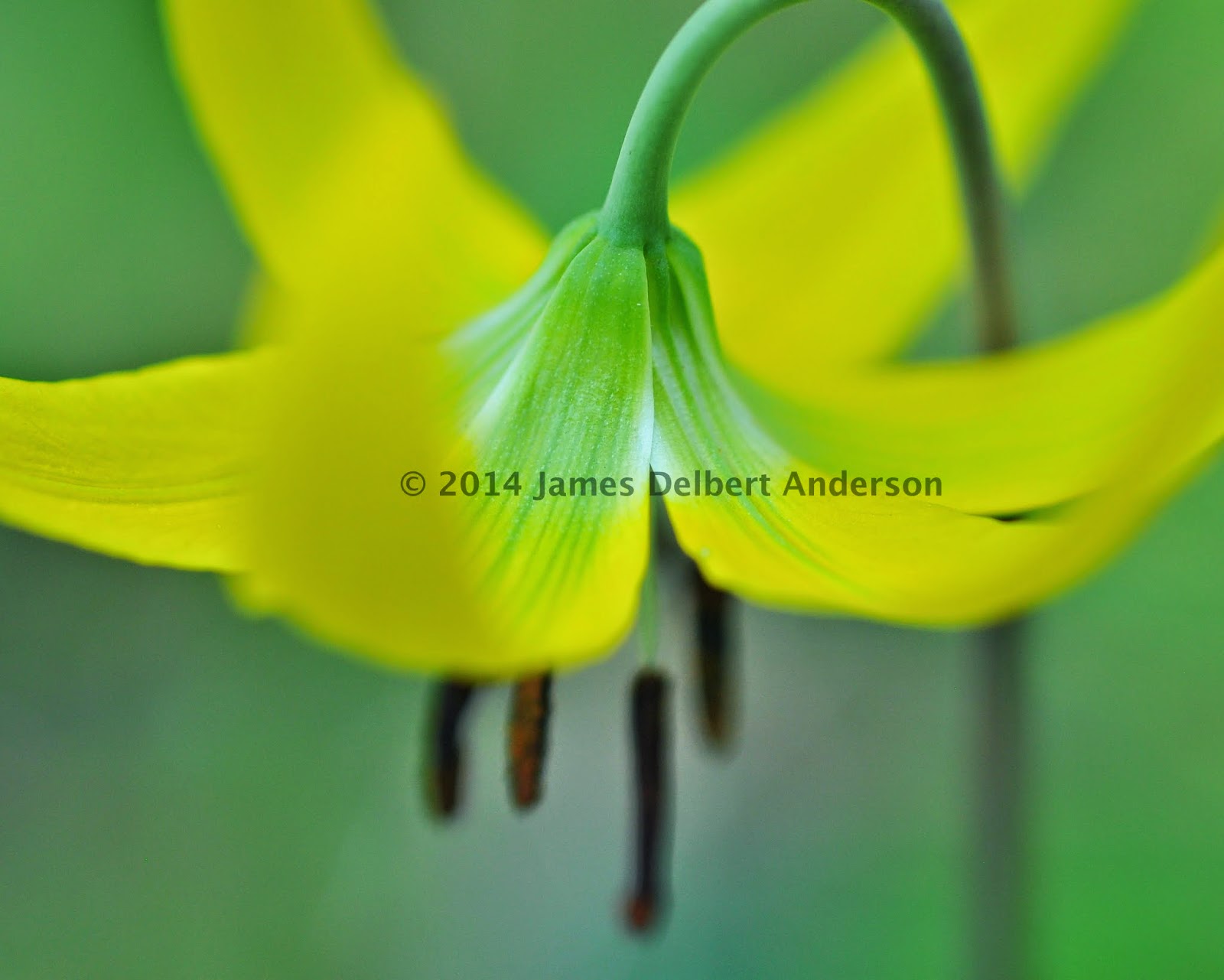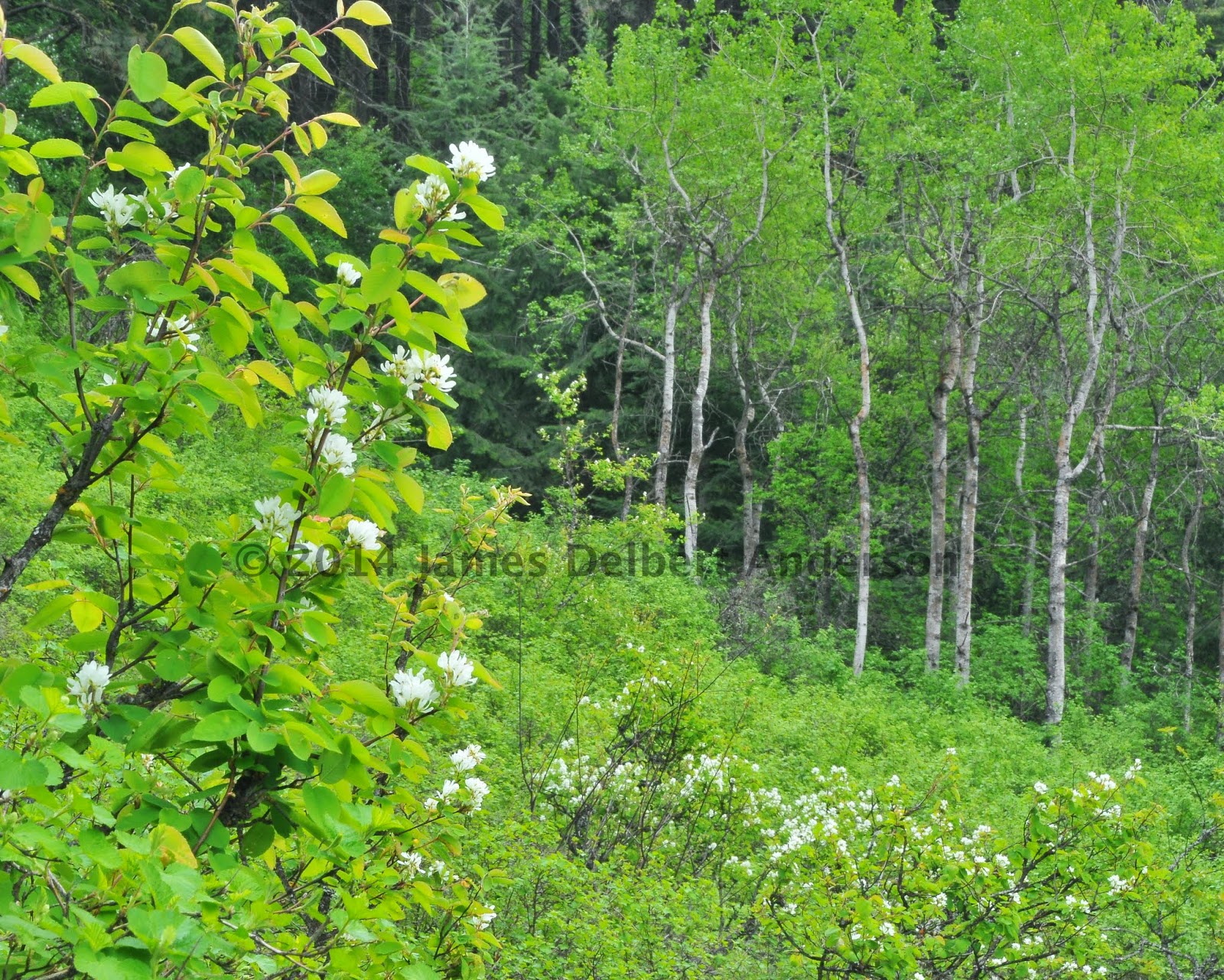(The Butte actually reminds me a lot of places I've visited in the Olympic rainshadow, like Washington Park in Anacortes and Deception Pass State Park. There are a lot of southwest-facing hillsides and bluffs that sport meadows that even share some species with Kamiak Butte; the north sides are thickly forested. Obviously, snowmelt is not the factor there, but probably the strength of sunlight in the late spring and summer, as well as possibly the greater rockiness of the glacier-scraped southern faces).
The forests of Kamiak Butte were full of wildflowers. We'll look at some of those first, and then move on to some more landscape-ish shots of the forest.
We'll start things off with one of my favorite forest wildflowers, Calypso orchid (Calypso bulbosa). They're rather small, but the pink stands out on the dark forest floor. You can find them on the west side, too, mostly in the mountains and in less-disturbed lowland forests. For this one, I used f/3.5 to blur the background as much as possible - as with other forest floor images, the key was eliminating as much distracting background detail as possible, keeping attention on the flowers in the foreground. That was the prevailing challenge, in fact, in all of the closeups featured in this post, eliminating forest-floor distractions.
Next is another flower that's easy to overlook: Long-flowered bluebell (Mertensia longiflora). I say easy to miss because it is very small and grows from the forest floor. I used f/5, which wasn't quite as wide as I could have gone, because wider apertures didn't produce a large enough in-focus area on the foremost flower. Since the inflorescence takes up basically the whole image, there wasn't too much background to worry about, anyway.
Below is the same plant, just in bud stage. I used f/3.8, a fairly wide aperture, to blur as much background as possible and keep the in-focus area limited to the buds in the foreground. I think the blurred leaves provide an interesting contour.
A third image of long-flowered bluebell, f/4.5.
Next is western meadowrue (Thalictrum occidentale), a plant that I first identified as "jellyfish plant" before I knew what it was. Don't the flowers vaguely remind you of jellyfish? Anyway. I was so close to these flowers, and so far from anything else in the background, that I was able to use f/5.6 and still not get any background clutter. This gave me a larger area of the foreground flower in focus, which is always nice to work with.
The flower below is obviously a lily, probably yellow glacier lily (Erythronium grandiflorum). I say "probably" because the guidebooks all place this flower primarily in subalpine and alpine environments, and only rarely at mid-elevations. Kamiak Butte is not all that high. But it's special that way. For this particular image, I used f/4.5, which was sufficiently wide enough to produce the degree of background blur that I wanted, while still keeping a decent amount of the flower in focus.
Below is what I am guessing to be Piper's anemone, or windflower (Anemone piperi). I used f/3.3 to blur the background (i.e. the forest floor). Even so, plenty of shape appears in the leaves, lending the image some context.
Next is Hooker's fairybell (Disporum hookeri), which is also common in lowland forests on the west side. More so, I think, in old-growth forests, but I've seen it in second-growth areas. This image's challenge was composing it in such a way that no sticks or branches intruded on the edges. To do so, I had to contort my tripod and torso into some interesting positions. F/5 gave me sufficient background blur while keeping a satisfying amount of the flowers in focus.
Below is a flower that will be familiar to west-side flower aficionados, western trillium (Trillium ovatum). I've always associated these with damp west-side forests and didn't necessarily expect to find them on Kamiak Butte. Yet there they were. I used a wide aperture for this image, f/4, to eliminate background clutter and isolate the flower itself as much as I could.
Below is a flower I haven't definitively placed. Perhaps some sort of violet? My best guess is early blue violet (Viola adunca). I found these occasionally popping up in sunnier forest spots. I used F/4.5 to blur the background; that, however, was not quite as wide as I could have gone, because I thought the grass and leaves helped provide some unifying shape in this particular case (I'm not usually that lucky).
Next is ballhead waterleaf (Hydrophyllum capitatum), one that is, as far as I know, mostly limited to forests east of the Cascade Mountains. Sunlight was falling on the forest floor a few inches away, making, I think, for an interesting background. I used f/3.2 to minimize background detail as much as possible; in this case, I did want to reduce it as much as possible to solid colors.
The last forest flower we'll look at is serviceberry (Amelanchier alnifolia). Serviceberry trees grow both under forest cover and in the meadows, but I found this particular specimen in the forest, so I'm including it in this post. F/4.5.
And the trees don't consist merely of ponderosa and sporadic Douglas-fir, like some forests in the area. Larch, grand fir, and other conifers also occur throughout a forest that generally has a fairly rich understory. If you're lucky, you might even find a grove or two of quaking aspen. I've always visited the Butte in the spring, but the aspen and larch suggest interesting autumn scenery. Idea.
In the interests of presenting this aspect of the Butte, I'll conclude the post with three images that feature broader views of the forest.
The first image comes from the part of the Pine Ridge loop that parallels the road. The deciduous trees in the background are quaking aspen (Populus tremuloides), and the flowering tree in the foreground is serviceberry or saskatoon (Amelanchier alnifolia). I used f/25 for this image to put everything into focus, because I thought this would enhance the juxtaposition of the flowers and the aspen.
Finally, a view of forest consisting mostly of western larch (Larix lyallii), also from the West End Primitive Trail. F/14, for similar reasons as above.
In a few places, the forest floor was positively carpeted with the leaves and buds of star-flowered false solomon's seal (Smilacina stellata). I would have liked, of course, to have been able to photograph them while the flowers were blooming. But the absence of flowers brings more attention to the leaves themselves. Below are two images that use two different concepts to depict these leaves. For the first, I used a wide angle and an aperture of f/18 to capture the whole scene. For the second, I approached much closer to the scene (still using my wide-angle lens and a close-up filter for a more interesting perspective), using f/9 to get a bit of selective focus.

















No comments:
Post a Comment